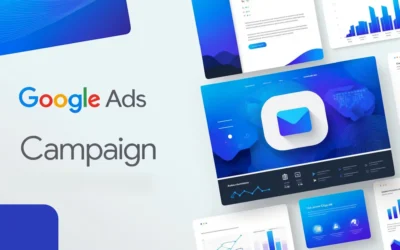SEO Glossary: A Glossary of Terms
Navigating the world of online business can feel like learning a new language. To help you decipher the jargon, we’ve compiled this glossary of essential terms related to website optimisation, SEO, hosting, and digital marketing.
A
- A/B Testing: A method of comparing two versions of a webpage or element to see which performs better.
- Algorithm: A set of rules used by search engines to determine the ranking of websites in search results.
- Alt Text: Descriptive text added to images to help search engines understand their content and improve accessibility for visually impaired users.
- Analytics: The process of collecting and analysing data about website traffic and user behaviour to improve website performance and marketing effectiveness.
B
- Backlink: A link from one website to another. High-quality backlinks are important for improving SEO.
- Bounce Rate: The percentage of visitors who leave a website after viewing only one page.
- Breadcrumb Navigation: A navigational aid that shows users their current location within a website’s hierarchy.
C
- Cache: A temporary storage location for website data to speed up loading times for returning visitors.
- CDN (Content Delivery Network): A network of servers that deliver website content to users based on their geographic location, improving website speed and performance.
- Conversion Rate: The percentage of website visitors who complete a desired action, such as making a purchase or filling out
a form. - Crawler: A program used by search engines to browse and index website content.
- CSS (Cascading Style Sheets): A language used to describe the presentation of a website, including colours, fonts, and layout.
D
- Digital Marketing: The use of online channels to promote a brand, product, or service.
- Domain Name: The unique address of a website (e.g.,
www.example.com - DNS (Domain Name System): A system that translates domain names into IP addresses, allowing users to access websites.
E
- Ecommerce: The buying and selling of goods or services online.
- Email Marketing: The use of email to promote products, services, or content to a targeted audience.
H
- Hosting: The service that provides the server space and infrastructure for a website to be accessible online.
- HTML (Hypertext Markup Language): The code used to create web pages.
- HTTPS: A secure protocol for website communication that encrypts data to protect user information.
I
- Indexing: The process of adding website content to a search engine’s database so it can appear in search results.
- IP Address: A unique numerical address assigned to every device connected to the internet.
K
- Keyword: A word or phrase that users type into search engines to find information.
- Keyword Density: The percentage of times a keyword appears on a web page compared to the total number of words.
L
- Landing Page: A webpage designed to capture leads or encourage a specific action from visitors.
- Link Building: The process of acquiring backlinks to a website to improve SEO.
M
- Meta Description: A brief summary of a webpage’s content that appears in search results.
- Meta Tags: HTML tags that provide information about a webpage to search engines.
- Mobile-First Indexing: Google’s approach to indexing websites based primarily on their mobile versions.
O
- On-Page Optimisation: Optimising the content and structure of a webpage to improve its ranking in search results.
- Off-Page Optimisation: Activities performed outside of a website to improve its ranking in search results, such as link building and social media marketing.
- Organic Traffic: Website traffic that comes from unpaid search results.
P
- Page Speed: The time it takes for a webpage to load.
- PPC (Pay-Per-Click): A type of advertising where advertisers pay a fee each time their ad is clicked.
R
- Redirect: A way to forward users from one URL to another.
- Responsive Design: A web design approach that ensures websites adapt to different screen sizes and devices.
- robots.txt: A file that instructs search engine crawlers which pages on a website to index or ignore.
S
- SEO (Search Engine Optimisation): The process of improving a website’s visibility in search results.
- SERP (Search Engine Results Page): The page that displays the results of a search engine query.
- Sitemap: A file that lists all the pages on a website, making it easier for search engines to crawl and index the site.
- SSL Certificate: A digital certificate that authenticates a website’s identity and encrypts information transmitted between the website and users.
T
- Traffic: The number of visitors to a website.
- Title Tag: An HTML tag that specifies the title of a webpage, which appears in search results.
U
- URL (Uniform Resource Locator): The address of a webpage or other online resource.
- UX (User Experience): The overall experience a user has when interacting with a website or product.
W
- Web Hosting: See “Hosting.”
- Website Optimisation: The process of improving a website’s performance, usability, and visibility in search results.
This SEO glossary provides a starting point for understanding the key terms used in website optimisation, SEO, hosting, and digital marketing. As you delve deeper into these areas, you’ll encounter more specialised terminology, but this foundation will help you navigate the online world with confidence.





